 Science and Nature
Science and Nature
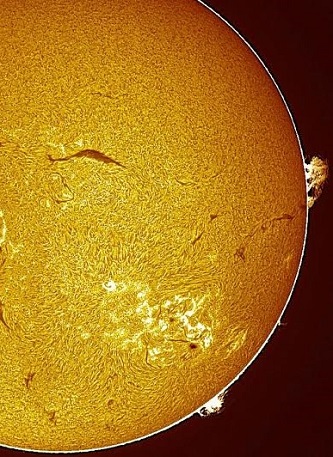
UCCI observatory captures the sun, moon and stars
 (CNS): Since it open in February 2012, the star gazers at UCCI, led by Observatory Director Dr Bill Hrudey, have been documenting the sun. Producing some important observations, Dr Hrudey is keen to encourage more people to get involved in astronomy. In addition to working towards the STEM conference at the UCCI next spring, he will also run an astrophotography course every Tuesday evening, starting 6 from January, with a solar session to be scheduled on a Saturday morning. A comprehensive course for beginners and intermediates, it will be held in the observatory classroom and cover star trails, wide field, solar, lunar, planetary and deep sky objects. Hundreds of school students, from pre-K to seniors, have toured the observatory and been impressed with images taken through the various telescopes.
(CNS): Since it open in February 2012, the star gazers at UCCI, led by Observatory Director Dr Bill Hrudey, have been documenting the sun. Producing some important observations, Dr Hrudey is keen to encourage more people to get involved in astronomy. In addition to working towards the STEM conference at the UCCI next spring, he will also run an astrophotography course every Tuesday evening, starting 6 from January, with a solar session to be scheduled on a Saturday morning. A comprehensive course for beginners and intermediates, it will be held in the observatory classroom and cover star trails, wide field, solar, lunar, planetary and deep sky objects. Hundreds of school students, from pre-K to seniors, have toured the observatory and been impressed with images taken through the various telescopes.
A number of service clubs have also visited, in addition to guests of the university from off-island.
Dr Hrudey is onsite almost every day capturing solar images in the hydrogen alpha band with the Lunt 60 double stacked solar scope. This telescope is specifically designed for solar observations and captures many of the impressive details on our very dynamic sun. In the last year, two of the largest sunspots on record have been imaged and are included in the massive library of solar images.
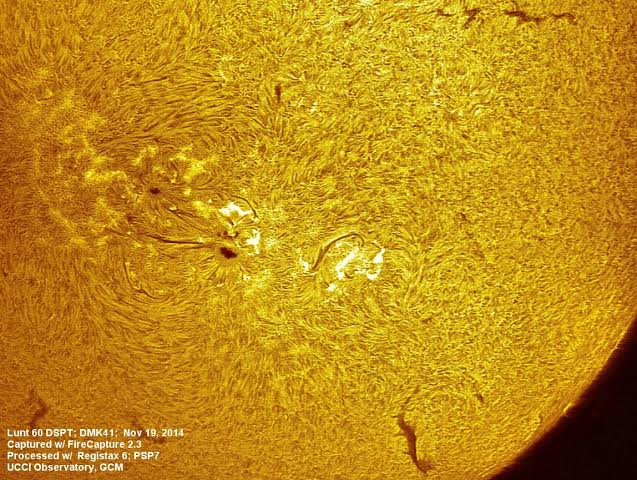
Although it does not have the biggest telescope in the Caribbean, it is one of the most sophisticated collection of computerized and imaging equipped facility capable of research level activities.
Anyone interested in signing up for the astrophotography course should contact Dr Hrudey as soon as possible as seats are limited to 15 people only. Tuition is $150 for the entire semester and students should bring an 8 gig thumb drive to the first class to download software and practice files. They should, if possible, have a DSLR with interchangeablelenses and be fluent in Windows.
For further information, please contact Dr Bill Hrudey, at 327-1892 or whrudey@candw.ky.

Pope calls on Catholics to take on climate change
 (CNS): Pope Francis wants to have a direct influence on the Paris climate change summit next year and has declared it his mission to take on the subject during 2015 through speeches, summit appearances and a call-to-arms to the world’s Catholics. Next year the pontiff is expected to tell the planet’s 1.2 billion Catholics why acting on climate change is essential to the faith, using an influential church document called an encyclical. According to global media reports, this long rumoured document will be released to the world’s 5,000 bishops and 400,000 priests shortly. One of the pope’s main goals will be to influence the Paris conference next December, when the objective is to achieve a legally binding agreement on climate from every country in the world after decades of negotiations to determine the planet’s future.
(CNS): Pope Francis wants to have a direct influence on the Paris climate change summit next year and has declared it his mission to take on the subject during 2015 through speeches, summit appearances and a call-to-arms to the world’s Catholics. Next year the pontiff is expected to tell the planet’s 1.2 billion Catholics why acting on climate change is essential to the faith, using an influential church document called an encyclical. According to global media reports, this long rumoured document will be released to the world’s 5,000 bishops and 400,000 priests shortly. One of the pope’s main goals will be to influence the Paris conference next December, when the objective is to achieve a legally binding agreement on climate from every country in the world after decades of negotiations to determine the planet’s future.
He will also take his message to the UN General Assembly in a New York address next September and has plans to personally lobby political and faith leaders there, with the goal of pushing them to commit to real action ahead of the Paris meeting.
Earlier this year, Pope Francis told a massive crowd in Rome, “If we destroy Creation, Creation will destroy us.” He has also called the destruction of the rainforest a “sin”, and under his leadership the Church held a five-day summit with scientists, economists, philosophers, astronomers and other experts to explore ways the Catholic church could address climate and sustainability.
During the climate talks in Lima this month, Catholic bishops from every continent called for “an end to the fossil fuel era”. This follows, they said, the need to prioritize “the immediate needs of the most vulnerable communities”.
In an annual lecture to the British Catholic group, Cafod, last month, Argentinian Bishop Marcelo Sánchez Sorondo, the Chancellor of the Pontifical Academy of Sciences, said that “solid scientific evidence exists that global climate is changing and that human activity based on the use of fossil materials contributes decisively to this trend”.
Sorondo has also pointed to the pope’s “unique role as a religious leader” to offer guidance to ensure the natural world is developed in a sustainable and socially inclusive way.
“The problem of climate change has become a major social and moral problem, and mentalities can only be changed on moral and religious grounds,” he said.
While many Christian groups are supportive of the need for real action to address climate change, there is still a strong majority of white evangelicals in the US who believe that worsening natural disasters are a sign of the apocalypse, not climate change, and other conservative evangelical sects will likely oppose Francis’ efforts.

Climate change will affect Cayman tourism
(CNS): The planet is set to warm by more than 2°C by 2100. With many of the world’s leaders meeting in Peru’s capital to discuss measures to be taken to reduce global climate change, small Island nations such as Cayman stand to lose out the most from sticking with the status quo. Thousands of activists marched through the streets of Lima Wednesday to demand a just solution to climate change. As sea temperatures rise, the risk of diseases among coral grows, as higher temperatures allow for bacteria to reproduce more easily. Many coral diseases, parasites and fungal infections spread more rapidly when waters warm, sometimes up to 14 times more rapidly.
The National Oceanic and Atmospheric Association of the US says there has been a marked increase in coral diseases in recent years, affecting up to two thirds of the Caribbean. Ocean Acidification dueto pollution will also hinder many species of corals regrowth, increasing the difficulties for marine populations to stay stable.
Cayman’s world renowned dive industry could suffer as a result of the death of corals, as they provide a key component of the marine life’s stability around the islands. As well as the fact that people from around the world will no longer take dive holidays here and local fishing will also be seriously impacted.
CARICOM representatives at the UN made the case for sustainable use of the oceans and seas based on the protection of biodiversity and the promotion of safe trade and fishing activities. Deputy permanent representative of Jamaica to the United Nations Shorna Kay-Richards spoke on behalf of the 15 countries belonging to the regional bloc, at a General Assembly session on the topic to mark the 20th anniversary of the of the entry into force of the United Nations Convention on the Law of the Sea.
It is not only our marine world that is threatened but our terrestrial one as well. Rising sea-levels will affect our coastline, with storms becoming intensified with warmer waters. Coastal erosion could become a problem, with the destruction of mangroves for residential and other developments. Without mangroves, there will be less fish making it to maturity as juveniles often use them for protection from predators. Without mangroves, our coastline loses their roots providing the area with solidarity, leaving the coast vulnerable to the force of the storm surge and erosion.
Almost all of the Cayman Island’s infrastructure lies only a few metres above sea level and close to shore, and despite the partial implementation of the National Conservation Law (NCL) and the formation of the National Conservation Council, there is little public discussion in the Cayman Islands on the potential future impacts of climate change and unsustainable development on this small country.
The need for a review of the Marine Conservation law and in particular the need to enhance the marine parks has been delayed, not least because of the continued opposition from a small but powerful number of people. The Department of Environment has also had to prioritise the implementation of the NCL as Cayman had no legislation to protect its terrestrial species, nor was it meeting its obligations in regards to some of the international conventions that Britain has extended to its territories.
Although the wider public in Cayman is very supportive of the need for better environmental protection, just a small and powerful lobby of those involved in development have been able to delay the islands' need to modernise legislation to protect its future.
While the rest of the world, in particular our contemporaries in the Caribbean, engage actively in the global discussion on the problem and what can be done to solve it, Cayman is only just coming to terms with needing to consider the environmental impact of development as well as socio-economic impacts.
NC Council and DoE thrash out new roles
(CNS): The debut meeting of the National Conservation Council (NCC) last Wednesday also saw its first heated debate, when members thrashed out the roles of the Department of Environment (DoE), its director and the NCC in implementing its new powers. The debate led to an early divide in opinion in the council over ambiguities in the law and the possible implications for any and all development of the island that could affect the environment. The new process requires those seeking approval for any major development to consult the National Conservation Council (NCC) under the National Conservation Law. Environmental impact assessments (EIAs) will now be compulsory if the council finds sufficient “red flags” over the impact on the environment of any development.
These assessments will take into account the potential environmental impact of developments over one acre, all coastal and marine development, and applications in areas covered by the Habitat Screening Map.
Any large scale residential, industrial or hotel development will require consultation by the NCC, to be screened and approved by them.
The law stipulates that every government entity, except Cabinet, shall “consult with the Council and take into account any views of the Council before taking any action”, including granting licences or permits they feel “would or would be likely to have an adverse effect on the environment generally or on any natural resource.”
This is all a big step forward for the Cayman Islands in terms of forming its own legal obligations to consider the preservation of the islands' natural heritage versus private and public development.
Even government entities, except Cabinet, will need to follow the law and “apply for and obtain the approval of the Council before taking any action” they feel “would or would be likely to have an adverse effect, whether directly or indirectly, on a protected area or on the critical habitat of a protected species.”
The law grants the NCC the power to issue binding cease and desist orders to anyone who fails to consult with it. The penalties for not complying with the NCC are a $500,000 fine, up to four years imprisonment and/or other punishments that may be imposed by the courts.
This has led to fears of an over extension of power for the government from certain sectors of the media and private developers. Council member Davy Ebanks questioned aloud during the meeting whether the ambiguities in the bill were leading to the creation of a “bloated” bureaucracy, hindering a private individual’s rights to develop their land without having to run through extensive and expensive EIA’s.
He also warned the NCC that this would affect small farmers and landholders principally, saying that when this “unworkable interdepartmental bureaucracy” ran into the problems he described, he reserved the right to say “I told unna so”.
The response from Gina Ebanks-Petrie, the DoE director, was that an EIA would only be necessary if the NCC agrees by vote that significant “red flags” are raised in terms of the projects potential impact on the environment. She said an EIA would take up a minimal percentage (0.1%) of the total cost of the overall development of any property based on the years of experience the government department has had dealing with EIAs and their costs on average.
She also went on to explain that ambiguities in the law allow for its flexibility in its evolution. While acknowledging the potential for abuse of such powers, she also explained that it is up to the discretion of those appointed by elected officials to preserve the integrity of such legislation.
“The detractors of the law would have us believe that it is going to usurp the authority of the CPA and other government bodies, and that is clearly not the case,” Ebanks-Petrie added
It was also confirmed that the Invasive Species Committee will be chaired by Davy Ebanks and it will give a report monthly to the NCC on matters involving non-native species, such as green iguanas and floral diseases. The attorney general will advise the NCC in legal areas, as the National Conservation Law is not yet fully in force and it is being implemented in stages.
The NCC will meet on the second week of every month and the next public meeting will be held on 25 February.
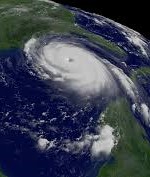
Experts accurate with hurricane season forecast
 (CNS): There were just eight named storms and only six became hurricanes during what turned out to be a quiet season as predicted by experts in the Atlantic this year. In May, the National Hurricane Centre had called for eight to 13 named storms, three to six hurricanes and one to two major hurricanes in its outlook for the season which turned out to be pretty accurate. But despite not even a warning in the Cayman Islands the quiet season still impacted Bermuda which had to weather two storms. Tropical Storm Fay and Hurricane Gonzalo hit the island within a seven day period demonstrating that even in the quietest of seasons there is no room for complacency.
(CNS): There were just eight named storms and only six became hurricanes during what turned out to be a quiet season as predicted by experts in the Atlantic this year. In May, the National Hurricane Centre had called for eight to 13 named storms, three to six hurricanes and one to two major hurricanes in its outlook for the season which turned out to be pretty accurate. But despite not even a warning in the Cayman Islands the quiet season still impacted Bermuda which had to weather two storms. Tropical Storm Fay and Hurricane Gonzalo hit the island within a seven day period demonstrating that even in the quietest of seasons there is no room for complacency.
Given that the Eastern Pacific season endured its most active since 1992 it could just as easily be the other way round next year. Louis Uccellini, director of NOAA’s National Weather Service warned that it was not always going to be the case that the region would escape the stormy weather as he urged communities to refine their response plans in the down season.
Scientists from the NHC explained why the season was so quiet in our region.
“A combination of atmospheric conditions acted to suppress the Atlantic hurricane season, including very strong vertical wind shear, combined with increased atmospheric stability, stronger sinking motion and drier air across the tropical Atlantic,” said Gerry Bell, lead hurricane forecaster at the Climate Prediction Center. “Also, the West African monsoon was near- to below average, making it more difficult for African easterly waves to develop.”
Despite the low number of storms NOAA scientists said they were still able to use new tools that have the potential to improve hurricane track and intensity forecasts, this season. Among the highlights were both manned and unmanned aircraft missions in Atlantic hurricanes to collect data and evaluate forecast models.
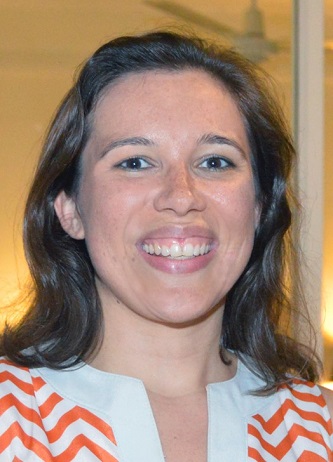
Environmental activist named conservationist of year
 (CNS): Katrina Jurn, has been named conservationist of the year in the National Trustsannual awards designed to celebrate those who are doing their best to preserve the country’s environment and natural resources which are currently under attack from all directions. Jurn who has led the charge on a number of environmental campaigns is also a founding member of Sustainable Cayman an organisation created to raise awareness about the myriad threats to Cayman’s natural environment. Alongside Jurn, Cody Panton, currently studying Marine Biology at the University of Tampa, bagged the Lois Blumenthal Youth Conservationist Award.
(CNS): Katrina Jurn, has been named conservationist of the year in the National Trustsannual awards designed to celebrate those who are doing their best to preserve the country’s environment and natural resources which are currently under attack from all directions. Jurn who has led the charge on a number of environmental campaigns is also a founding member of Sustainable Cayman an organisation created to raise awareness about the myriad threats to Cayman’s natural environment. Alongside Jurn, Cody Panton, currently studying Marine Biology at the University of Tampa, bagged the Lois Blumenthal Youth Conservationist Award.
Meanwhile, the Heritage Preservation Award, sponsored by Cayman National Bank, went to the Swanky Kitchen Band.
Compass Point Dive Resort also won the Tourism Conservation Award and Divetech Cayman Islands earned the Corporate Conservation Award. The National Trust also recognised donors to its Land Reserve Fund, which is spearheaded by Janet Walker.
The presentations were hosted by the governor, who recently accented to the latest amendments tothe planning law which many conservations have raised significant concerns about.

MRCU starts aerial attack to curb mozzies
 (CNS): Asconcerns rise that Cayman could see a surge in chikungunya virus and dengue due to a outbreaks and growing numbers of people being infected with both disease around the region the Mosquito Research & Control Unit (MRCU) is conducting targeted aerial operations over some 12,000 acres of mosquito-breeding swamp areas on Grand Cayman from Thursday. The mosquito attack will involve low-level flights during the mornings and late afternoon. The operation will start in the area of West Bay and finish on the north side of the island. Weather permitting; the full application should be complete within ten days.
(CNS): Asconcerns rise that Cayman could see a surge in chikungunya virus and dengue due to a outbreaks and growing numbers of people being infected with both disease around the region the Mosquito Research & Control Unit (MRCU) is conducting targeted aerial operations over some 12,000 acres of mosquito-breeding swamp areas on Grand Cayman from Thursday. The mosquito attack will involve low-level flights during the mornings and late afternoon. The operation will start in the area of West Bay and finish on the north side of the island. Weather permitting; the full application should be complete within ten days.
The distinctive red and white MRCU aircraft will be applying the small pellets specifically designed to target mosquito larvae developing in aquatic habitats; this means preventing the occurrence of biting mosquitoes.
Once the rains begin, the pellets are activated and will provide control for up to two months. Low-level flights over specific areas are necessary to ensure that correct application and successful control of mosquitoes is achieved.
This is the third island-wide treatment this year, on Grand Cayman, and the Sister Islands.
This will assist in providing control through the Christmas period to January next year. Some 12,000 acres of swamp are targeted in this operation in Grand Cayman, 320 acres in Cayman Brac and 475 acres in Little Cayman. Due to elevated mosquito breeding in Little Cayman, the aerial application in the Sister Islands was completed several weeks ago which is slightly earlier than usual.
Further information and daily schedules can be found on the Mosquito Research & Control Unit’s Facebook page or website www.mrcu.ky. A daily update of the areas being treated will also be available on those sites.
Please call MRCU with any enquiries on 949-2557

Florida lizards evolve before eyes of scientists
 (CNS): The process of evolution, in the lizard world at least, appears to be far quicker than biologists have previously assumed after scientists have documented the evolution of a native Florida lizard in as little as 15 years as a result of pressure from an invading species. Researchers found that after contact with the invader, Carolina anoles or green anoles, began perching higher in trees. Then, generation after generation, their feet evolved to become better at gripping the thinner, smoother branches found higher up. Scientists have always believed it takes generations and generations to adapt a favoured trait but they have now discovered that change can occur at an astonishing pace.
(CNS): The process of evolution, in the lizard world at least, appears to be far quicker than biologists have previously assumed after scientists have documented the evolution of a native Florida lizard in as little as 15 years as a result of pressure from an invading species. Researchers found that after contact with the invader, Carolina anoles or green anoles, began perching higher in trees. Then, generation after generation, their feet evolved to become better at gripping the thinner, smoother branches found higher up. Scientists have always believed it takes generations and generations to adapt a favoured trait but they have now discovered that change can occur at an astonishing pace.
Since Darwin’s time, biologists assumed that evolution takes centuries, or longer, but these findings are changing that view according to the research published in scientific journals.
Evolution is down to ecological conditions that favour certain traits over others among any species. When those with the favoured traits survive in changing conditions and reproduce the population over generations can change dramatically, or branch off into multiple new species.
However the Florida lizards changed much more quickly after moving to higher perches and over 15 years and just 20 lizard generations, their toe pads had become larger, with stickier scales on the feet.
“We did predict that we’d see a change, but the degree and quickness with which they evolved was surprising,” said Yodel Stuart, a postdoctoral researcher at The University of Texas in Austin and lead author of the study said.
“To put this shift in perspective, if human height were evolving as fast as these lizards’ toes, the height of an average American man would increase from about 5 foot 9 inches today to about 6 foot 4 inches within 20 generations—an increase that would make the average U.S. male the height of an NBA shooting guard,” said Stuart. “Although humans live longer than lizards, this rate of change would still be rapid in evolutionary terms.”
The native anoles, are common in the south-eastern US but the invasive species, Cuban anoles or brown anoles, are native to Cuba and the Bahamas. Brown anoles first appeared in South Florida in the 1950s, possibly as stowaways in agricultural shipments, and have since spread across the south-eastern US and have even jumped to Hawaii.
This latest study is one of only a few well-documented examples of what evolutionary biologists call “character displacement,” in which similar species competing with each other evolve differences to take advantage of different ecological niches. A classic example comes from the finches studied by Charles Darwin. Two species of finch in the Galapagos Islands diverged in beak shape as they adapted to different food sources.

Mangrove project needs cash to carry on critical work
 (CNS): A mangrove learning programme which began in the Cayman Islands, which is now being taught in schools all over the world is in need of funding to help keep it going. Given the increasing importance of these incredible trees in the face of environmental threats across the tropics the programme’s value cannot be underestimated. It is used in 11 countries world-wide with plans for three more for next year — Kenya, Suriname and India. Marvellous Mangroves gives students from tropical lands a basic understanding of scientific methodology and ecology, as well as methods as a precursor to a science-based university education.
(CNS): A mangrove learning programme which began in the Cayman Islands, which is now being taught in schools all over the world is in need of funding to help keep it going. Given the increasing importance of these incredible trees in the face of environmental threats across the tropics the programme’s value cannot be underestimated. It is used in 11 countries world-wide with plans for three more for next year — Kenya, Suriname and India. Marvellous Mangroves gives students from tropical lands a basic understanding of scientific methodology and ecology, as well as methods as a precursor to a science-based university education.
“Every $100 will enable one teacher to attend the Marvellous Mangroves three-day teachers’ workshop and provide them with a copy ofthe 300-page Marvellous Mangroves – adapted and translated for their own country,” said Cayman’s Martin Keeley the man behind the creation of the incredible programme.
The project began back in 2000 and the original video made by and featuring Keeley. It provides a dynamic reference resource for teachers and students to learn about how mangroves function and explore mangrove forests. The 300-page “Marvellous Mangroves in the Cayman islands” was developed for the Caribbean region starting in 1998 and linked to the Cayman curriculum.
It has since been adapted for the English-speaking Colombian Caribbean islands of San Andres and Providence; translated into Spanish and adapted for use in Colombia, Honduras and Guatemala; translated and adapted for use into Sinhala and integrated into the Sri Lanka national science curriculum. It has also been translated and adapted for schools in Brazil, China and Bangladesh, as well as English versions for Australia and Belize where it is part of the schools’ national curriculum.
Back in 2002, Tanny Onsalo was just nine years old when she first learned about mangroves and how important they really are to the world’s shoreline ecosystems. "It changed the way I think about mangroves as an incredibly important ecosystem. It's a fabulous program and I'm so happy to still be a part of the world of Marvellous Mangroves, and I tell people about them all the time," she said.
Onsalo’s full story is told on the website along with video footage and other information about the programme here http://mangroveactionproject.org/mangrove_curriculum/
Anyone wishing to help can make a donation here:
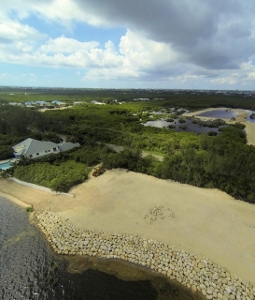
Battle continues on controversial coastal project
 (CNS): Residents in South Sound continue to press on with their battle to put a halt to a controversial development in the community that they say not only endagers the environment but sets an unwelcome precedent that could see the local coastline at significant risk from uncontrolled development. Concerns grew this week over what many see as far reaching and dangerous changes to the planning laws that make it more difficult for stakeholders to object to development in their neighbourhoods. Although current applications are being treated under the old law, it is not clear how the amendments will impact those who are objecting to the CPA’s decision to allow RC Holdings to dump fill some 50ft out into the ocean along 2,000ft stetch of coastline.
(CNS): Residents in South Sound continue to press on with their battle to put a halt to a controversial development in the community that they say not only endagers the environment but sets an unwelcome precedent that could see the local coastline at significant risk from uncontrolled development. Concerns grew this week over what many see as far reaching and dangerous changes to the planning laws that make it more difficult for stakeholders to object to development in their neighbourhoods. Although current applications are being treated under the old law, it is not clear how the amendments will impact those who are objecting to the CPA’s decision to allow RC Holdings to dump fill some 50ft out into the ocean along 2,000ft stetch of coastline.
The Planning Appeal Tribunal heard an application last week from action group Protect South Sound for leave to amend the grounds of appeal and to add fresh evidence. A decision is expect at the end of November. The hearing comes two years after the appeal on the Central Planning Authority’s decision was delayed, first when the tribunal was disbanded in early 2013 because of the general election and there was another delay in reinstating the tribunal after the current administration took office.
CNS contacted Protect South Sound for comment on the latest development but a spokesperson said that they were unable to speak about the current issues. However, they are continuing to do what they can to save their community’s coastline.
The major concern of the group was that the decision by the CPA to allow the reclamation of land by the developer was based on a legal error. Former chief surveyor, Alister Ayres, has said at the time that the planning permission in this case was granted as a result of incorrect interpretation of the land survey regulations.
Photographs posted on CNS last November showing the damage to the coastline following the CPA’s decision to allow the developer to reclaim land generated considerable debate. The thorny question that the tribunal will now need to deal with is how coastal boundaries can be fixed, and if they are, what that might mean for the future of Cayman’s already vulnerable coastline.
See related story on CNS: